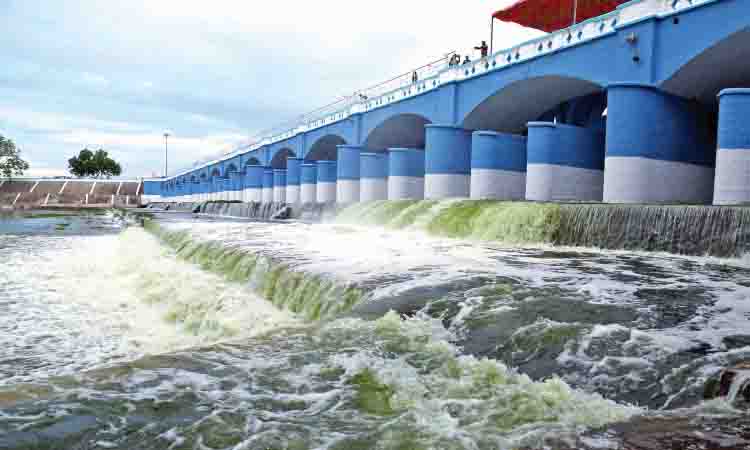Tiruchi: Excited at the start of the new farming year, following the release of water from Mettur on June 12 and subsequently from Grand Anicut for delta irrigation, farmers in the region have welcomed ‘Maa Cauvery’, the lifeline of Tamil Nadu’s rice bowl. Delighted farmers have expressed hope that they will be able to achieve the Kuruvai target this year due to favourable conditions, such as the forecast of timely arrival of monsoon and healthy groundwater levels in many districts. The Cauvery river basin lies in the states of Karnataka, Tamil Nadu, Kerala and the Union Territory of Puducherry, and when the Cauvery flow is good and strong, Tamil Nadu farmers have a reason to cheer. 41.2 per cent of the total area of the basin falls in the state of Karnataka, while Tamil Nadu has the maximum area flow at 55.5 per cent and Kerala 3.3 per cent. More than 90 per cent of the water of the river basin is used for agriculture. Chief Minister MK Stalin opened the sluice gates of Mettur reservoir on June 12 and it reached the upper anicut in Tiruchi on Saturday (June 14) and was released into the Grand Anicut upon receipt of water.
On Sunday (June 15), the Chief Minister will once again release water from the Grand Anicut for delta irrigation. The Cauvery flows through Thanjavur, the granary of Tamil Nadu, enters the musical shrine of Tiruvaiyuru and then joins the sea at Poompuhar, formerly called ‘Kaveripoompattinam’ where the famous Tamil woman ‘Kannagi’ lived. Thus, it has a vital role in the lives of the people of Tamil Nadu, especially the farming community of the Cauvery delta region. “The Cauvery not only plays a role in irrigation, but most of the major religious festivals are centered around the Cauvery, and so we give Mother Cauvery a divine place,” said Ayilai Siva Sooriyan, Tiruchi district president of the Tamil Nadu Farmers Association. According to his observations, farmers and people of the region used to give a divine welcome to the Cauvery. “Whenever the river flows into Tamil Nadu, we sprinkle flowers and welcome the Cauvery with ‘Aarti’ to the divinity and sprinkle paddy seeds to mark the beginning of a new farming year with Kuruvai. Above all, we pray to Mother Cauvery to help us get a good harvest, and the first day of water release would be a day of celebration,” Shiva Sooriyan added. Meanwhile, in some areas on the Tamil Nadu border, people would prostrate themselves in front of the river when it would flood the land.
Sukumaran, a farmer from Tiruvaiyaru, said, “We perform all kinds of rituals before water comes to irrigate our fields. Though the government is desilting irrigation canals, we, on our part, ensure that the canals reach our fields. Before that, we perform rituals and pujas before starting farming.” Sukumaran further said, “Whenever water is released on the customary date of June 12, we never miss a bumper crop. And this time too we are confident of another bumper crop.” Going by this logic, last year water was released from Mettur on July 28 due to poor storage in the reservoir, and districts like Thanjavur, Tiruvarur, Nagapattinam and Mayiladuthurai could cultivate kuruvai only up to 3.45 lakh acres as against the 5.25 lakh acres in 2023. With water being released on the customary date this year, farmers in the region believe that the kuruvai target will definitely be achieved this year. Meanwhile, officials of the agriculture department said that a target has been set for cultivating 5.28 lakh acres of kuruvai, which includes 1.95 lakh acres in Thanjavur, 1.75 lakh acres in Tiruvarur, 97,500 acres in Mayiladuthurai and 61,000 acres in Nagapattinam. Due to favourable conditions, farmers who were earlier cultivating kuruvai have started cultivating it across the region with the help of groundwater from April itself. Accordingly, kuruvai has been cultivated in 80,000 acres in Thanjavur, 25,700 acres in Tiruvarur and 50,000 acres in Mayiladuthurai district and farmers are optimistic of getting a bumper crop this year too with the water available through river irrigation after the release of water from the Grand Anicut.
